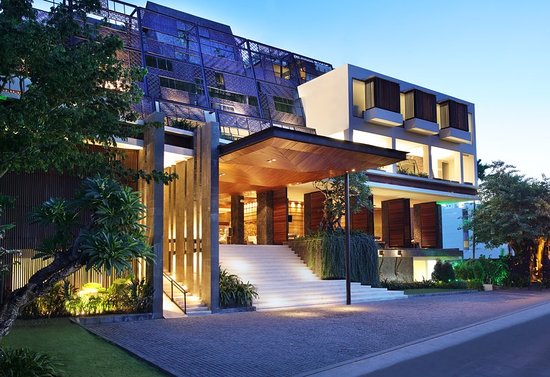Venue & Hospitality
Bali, Indonesia Four Points by Sheraton Bali, Seminyak Jalan Petitenget Gang Cendrawasih No. 99 DS Seminyak, Bali 80361 Indonesia
Conference Dates: August 13-14, 2018
Hotel Services & Amenities
- Audio/Visual Equipment Rental.
- Business Center.
- Business Phone Service.
- Complimentary Printing Service.
- Express Mail.
- Fax.
- Meeting Rooms.
- Office Rental.
- Photo Copying Service.
- Secretarial Service.
- Telex.
- Typewriter.
- Video Conference.
- Video Messaging.
- Video Phone.
- ATM.
- Baggage Storage.



Transportation
Driving Directions to
Ngurah Rai International Airport Proceed east on Jalan Airport Ngurah Rai toward Jalan I Gusti Gede Suandi. At the roundabout, take the second exit onto Jalan Airport Ngurah Rai and turn left onto Jalan I Gusti Ngurah Rai. At the next roundabout, take the second exit onto Jalan Sunset Road. Turn slight left to continue on Jalan Sunset Road.m Turn right onto Jalan Raya Kerobokan. Turn left onto Jalan Petitenget. At the intersection with Jalan Batu Belig, turn left to stay on Jalan Petitenget. The resort will be ahead on the right.
Route Map
About City
Four Points by Sheraton Bali,
Seminyak Jalan Petitenget Gang Cendrawasih
No. 99 DS Seminyak, Bali 80361 Indonesia
Bali is an island and province of Indonesia. It is located at the western most ends of the Lesser Sunda Islands, between Java to the west and Lombok to the east. Its capital, Denpasar, is located in the southern part of the island. Bali is a part of the Coral Triangle, the area with the highest biodiversity of marine species. In this area over 500 reefs building coral species can be found, which is approximately about 7 times as many as in the entire Caribbean.
Sandy coastlines, mountainous tropical forests, island of flowers, temples, surfing, scuba diving, spas, distinctive culture and friendly people makes Bali, one of the best tourist destination in Indonesia.
Tourism business makes up 80% of its economy. It is renowned for its highly developed arts, including traditional and modern dance, sculpture, painting, leather, metalworking, and music.
Approximately three million tourists (not including Indonesian nationals) visited Bali in 2013, constituting its primary economic resource and affirming its reputation as an international vacation destination. The interplay between development and shoreline erosion is significant to the Balinese people because to them a beach provides more than economic benefits–it also plays a significant role in cultural and religious activities. An expensive large-scale endeavor, nourishment projects are not solution but only treatments for an eroding shoreline. In a developing country such as Indonesia, there exists a serious opportunity cost for undergoing such an intensive unsustainable projects. These funds could be utilized for needs in education and public services. With a better understanding of local coastal dynamics, community leaders hold the power to apply sound coastal and riparian zoning practices, possibly initiating a paradigm shift for the island, providing a lasting impact on how the island perceives sustainable coastal management.
